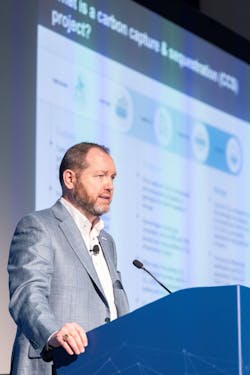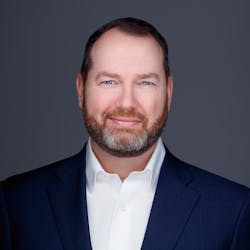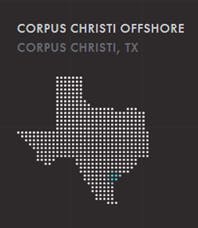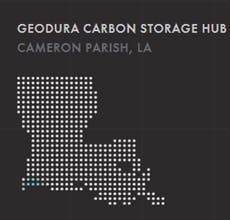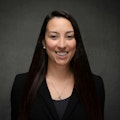OTC 2025: Carbonvert advancing CCS offshore through partnerships
By Ariana Hurtado, Editor-in-Chief
Many companies in the offshore energy industry have carbon neutrality or net-zero goals they are aiming to meet by 2030 (e.g., Siemens), 2040 (e.g., Maersk) and 2050 (e.g., Shell, bp, Aramco).
The National Academy of Sciences estimated in June 2021 that to meet the Paris Agreement goals, 10 gigatons (GT) of CO2 will need to be removed globally each year through 2050, with 20 GT of CO2 removed each year from 2050 to 2100.
Global need and incentives are driving accelerated investment in CCS, and emerging economic CCS pathways are supported by regulatory tailwinds, according to Carbonvert CEO Alex Tiller, who led the "Carbon Capture and Storage: Pioneering the Future of Lower-Carbon Energy" keynote session on May 7 at the Offshore Technology Conference (OTC) in Houston.
He started the presentation pointing out how the technology certainly isn't "pioneering," as it has been around since the 1970s.
"We figured out how to store carbon in the ground, manage carbon and inject carbon, and manage it through different life cycles all the way back in the' 70s, with enhanced oil recovery. And so really, what we're doing today, this so called 'pioneering' ... it's nothing new," he said. "It's taking a technology that's known and it's really advancing it into a commercial setting where we use the same application of skills and technology under different market conditions with different market motivators than just enhanced oil recovery."
Industry-backed projects and initiatives
Carbonvert, now with locations in Denver and Houston, started in August 2020 as a CCS project development and financing company. Tiller said their goal is to develop projects resulting in 100 MMtons of carbon stored or avoided by year-end 2033. He added that they do not intend to replicate what companies like Exxon or Chevron are already doing but instead wants to partner with these types of organizations.
The company's leadership team is made up of seasoned industry executives with decades of experience. For example, Jan Sherman is the chief development officer and came to Carbonvert from Shell’s Upstream deepwater and unconventional businesses where she gained 30 years of experience in leadership, project development and asset management for the oil and gas industry. Additionally, Carbonvert COO Wissam AL Monthiry was previously managing director at Tullow and also spent 18 years with bp.
Tiller reflected on when he and Sherman started the company five years ago and said they knew the state of Texas would never give Carbonvert a lease. Their intent was to find a company with more of a balance sheet and with more operational capabilities than what they had. And he said the help goes both ways, as Carbonvert can "move fast and be decisive," moving things along more quickly than larger companies that deal with "levels of bureaucracy."
"This partnering thing is all about choosing the right partner for the right project at the right time, and we've been pretty intentional about about that and not haphazard. Different organizations all have different skills and capabilities," he added. "It's not secret sauce, but it's definitely proven to be a winning strategy for us."
One of the company's major milestones was when it partnered with Talos Energy from May to August 2021 for the first offshore CO2 lease. This was for the Bayou Bend CCS project, a 20+ MMPTA CO2 capture, transport and storage hub in southeast Texas that combines offshore and onshore acreage to serve Port Arthur, Texas, the Houston Ship Channel and surrounding region. Chevron went on to buy half the project in May 2022.
Projects in the works
There are about 30 CCS projects in the world right now, Tiller said, and he highlighted two of Carbonvert's projects during the OTC session: the Corpus Christi offshore CO2 capture and storage facility and the GeoDura CO2 storage hub.
The Corpus Christi project has a 142,793-acre offshore lease footprint and more annual carbon emission avoidance that all of California's utility-scale solar. The project partners are AVES, Carbonvert (45%), Repsol (operator) and Mitsui E&P Low Carbon Solutions. Tiller said this is one of the largest offshore CO2 storage hub projects in the US and among the largest in the world. It has a total projected CO2 storage capacity exceeding more than 600 MM metric tons. He also noted that the shallow-water depth minimizes development costs and a single landowner (Texas GLO) streamlines owner relations.
The Corpus Christi offshore CCS hub is expected to generate $4.8 billion in Texas schools, provide more than 1,800 local jobs, $130 million in tax benefirs and $5 billion in catalyzed investment, according to Tiller's presentation.
The GeoDura CO2 storage hub offshore Louisiana is much smaller, with about 24,000 acres, and it has an estimated storage capacity of more than 250 MM metric tons. The owners are Carbonvert (27.5%), Castex and Enbridge, together under the joint venture OnStream CO2. The partnership with Enbridge closed in July to advance the project toward FID. GeoDura's stratigraphic well was drilling onshore in fourth-quarter 2024. In November 2024, OnStream received a $26 million CarbonSAFE Phase III grant from the US Department of Energy to advance its development of the GeoDura project.
The project is on track to be Louisiana's first multi-source carbon storage hub, and first injection is expected in 2028.
The technology aspect
Tiller said there have been "tremendous advances" in capture technology but was adamant his company refrains from labeling one as the best.
"From a technology standpoint, we actually take an agnostic position, where we don't promote a single capture technology," he said. "There's various technologies out there; some work better under certain circumstances, with certain types of emissions, at certain concentrations, at certain temperatures and various parameters. And so instead of trying to say, 'hey, we're going to be a capture company and we're going to lock into a single capture technology,' we prefer to kind of review the entire market landscape and try to figure out what is the best technology."
Tiller acknowledged there has been a large focus on the technology angle, with private equity and financing available.
"A whole lot of venture capital has flooded coming into the technology market. We are seeing tremendous advances," he said. "But as of today, amine capture technology is kind of the standard. It's what's used in all the oil and gas, or natural gas processing. It's what we would call the most bankable technology, and so that's probably what you're going to see most of, but again, we take no position on exact technologies as long as they're bankable, financeable, predictable and have good kind of statistical qualities."
About the Author
Ariana Hurtado
Editor-in-Chief
With more than a decade of copy editing, project management and journalism experience, Ariana Hurtado is a seasoned managing editor born and raised in the energy capital of the world—Houston, Texas. She currently serves as editor-in-chief of Offshore, overseeing the editorial team, its content and the brand's growth from a digital perspective.
Utilizing her editorial expertise, she manages digital media for the Offshore team. She also helps create and oversee new special industry reports and revolutionizes existing supplements, while also contributing content to Offshore's magazine, newsletters and website as a copy editor and writer.
Prior to her current role, she served as Offshore's editor and director of special reports from April 2022 to December 2024. Before joining Offshore, she served as senior managing editor of publications with Hart Energy. Prior to her nearly nine years with Hart, she worked on the copy desk as a news editor at the Houston Chronicle.
She graduated magna cum laude with a bachelor's degree in journalism from the University of Houston.

